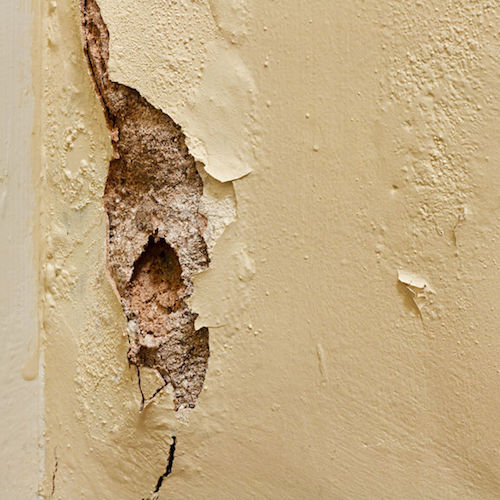Plaster Repair Fundamentals Explained
Wiki Article
More About Plaster Repair
Table of ContentsGet This Report on Plaster RepairGet This Report about Plaster RepairHow Plaster Repair can Save You Time, Stress, and Money.All About Plaster Repair
You can use the video tutorial to learn just how to reattach the plaster and prevent further damages. Settlement Cracks, Image Debt:// If a component of your home is sagging, you may discover assembling splits stumbling upon your plaster walls. Yes, you'll desire to spot and also load these cracks, yet resolve the larger concern of structure troubles.If you see this type of crack, call a professional, especially if they are brand-new as well as growing. Stained Water Tarnished Plaster This is the early signs of water damage to plaster. Brown water discolorations will begin to turn up soon after a leak starts. The very easy method to fix them is with a tarnish obstructing primer, but that will not do anything to solve the water issue.
Gurgling Plaster Once the water damages ends up being extreme, then the plaster will certainly begin bubbling and also bulging. You may reach this phase without any recognizable water stains, however when this takes place, a portion of the plaster will certainly have to be gotten rid of and covered.

Some Ideas on Plaster Repair You Should Know
If you see bulges in your wall surface or ceiling and also the plaster can be pushed back up against the wall surface, after that it's time to reattach that area of plaster. Bear in mind, plaster is the canary in the coal mine as well as these are simply some of the most typical plaster problems.If you have any type of plaster issues not discussed here, leave a comment listed below and also I'll try to respond to as numerous as I can about just how to resolve the issue. Great luck as well as watch that plaster! Subscribe Now For Your FREE e, Book! I enjoy old homes, collaborating with my hands, and training others the excitment of doing it on your own! Whatever is teachable if you only offer it the opportunity. plaster repair.
Are you obtaining an inground concrete swimming pool, or do you currently have one? If you're on a spending plan, opportunities are you're mosting likely to pick plaster for your pool surface, and also it's not a poor choice. Pool plaster is the most inexpensive choice, and it's the timeless choice for concrete inground swimming pools.
Because we at River Swimming pools have remained in the swimming pool sector for several years (now specializing in fiberglass), we're mosting likely to share a few of the problems that you may run into and also the different sorts of swimming pool plaster fixing work that you look what i found require to understand about. Allow's dive in ... Craze splits are little clustered cracks that occur when the pool plaster reduces.
The Plaster Repair Statements

Swimming pool plaster crazing is a rather common trouble, and the repercussions are normally small. When the crazing is also bad, however, it can cause discoloration, algae problems, as well as calcium nodules. A poor situation why not try here of crazing will require you to replaster your swimming pool. Exhibit A: Craze fractures appearing on swimming pool actions You could have a problem with engraving if your swimming pool surface area comes to be exceedingly harsh.
This is triggered by incorrectly well balanced pool chemistry, particularly p, H, alkalinity, or calcium, and it's one of the factors why we highlight the value of dealing with your pool appropriately. Scaling is another trouble and also can happen as a result of p, H, alkalinity, or calcium - plaster repair. This can bring about a build-up of calcium as well as other minerals in your swimming pool.
Right here's just how to avoid scaling in your swimming pool: Brush the pool walls frequently Pre-dilute acid before you add it to the water Do not add salt within thirty days of replastering your pool Never ever allow salt to rest on fresh plaster see to it your swimming pool is clean and your water chemistry is well balanced.
Your plaster might become a target of spalling if your pool is troweled incorrectly. For example, if your plaster mores than troweled or if the troweling is poorly timed, a slim layer of plaster (about one-eighth of an inch) can start to flake and peel, which can establish your job back another month.
The Greatest Guide To Plaster Repair
You can often fix plaster spalling by fining sand the area down to reveal a much smoother underlayer. If spalling has taken over a large area of your pool, it might be much better to start fresh and have your entire pool replastered.
If delamination is influencing a huge location of your pool, the best training course of activity would be to have the entire surface area replastered. You'll possibly see a massive difference in your plaster's color by the 8 to 12 year mark (unless you went with traditional white plaster).
You can additionally attempt keeping your swimming pool cover on when you're not making use of the pool. Most disinfecting systems will certainly have a bleaching impact on the plaster, however some, like bromine, have much less lightening power than chlorine. It's unavoidable - most concrete swimming pools will certainly establish discolorations in time. Stains in the plaster can be brought on by organic material in the swimming pool, like leaves and also dirt, or not natural things like steels.
Report this wiki page